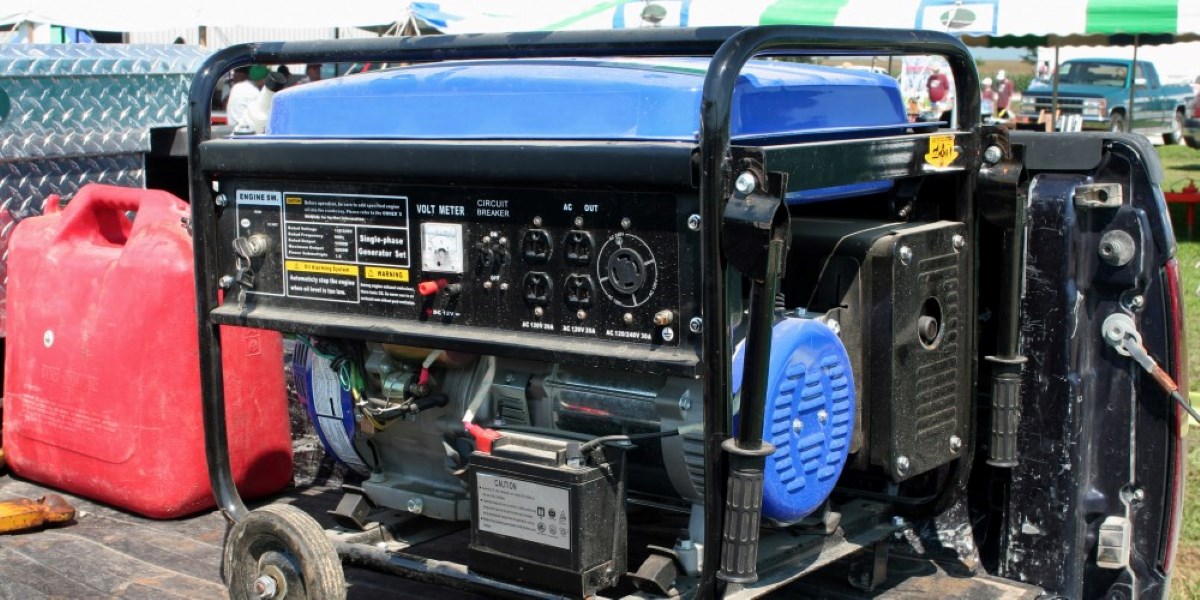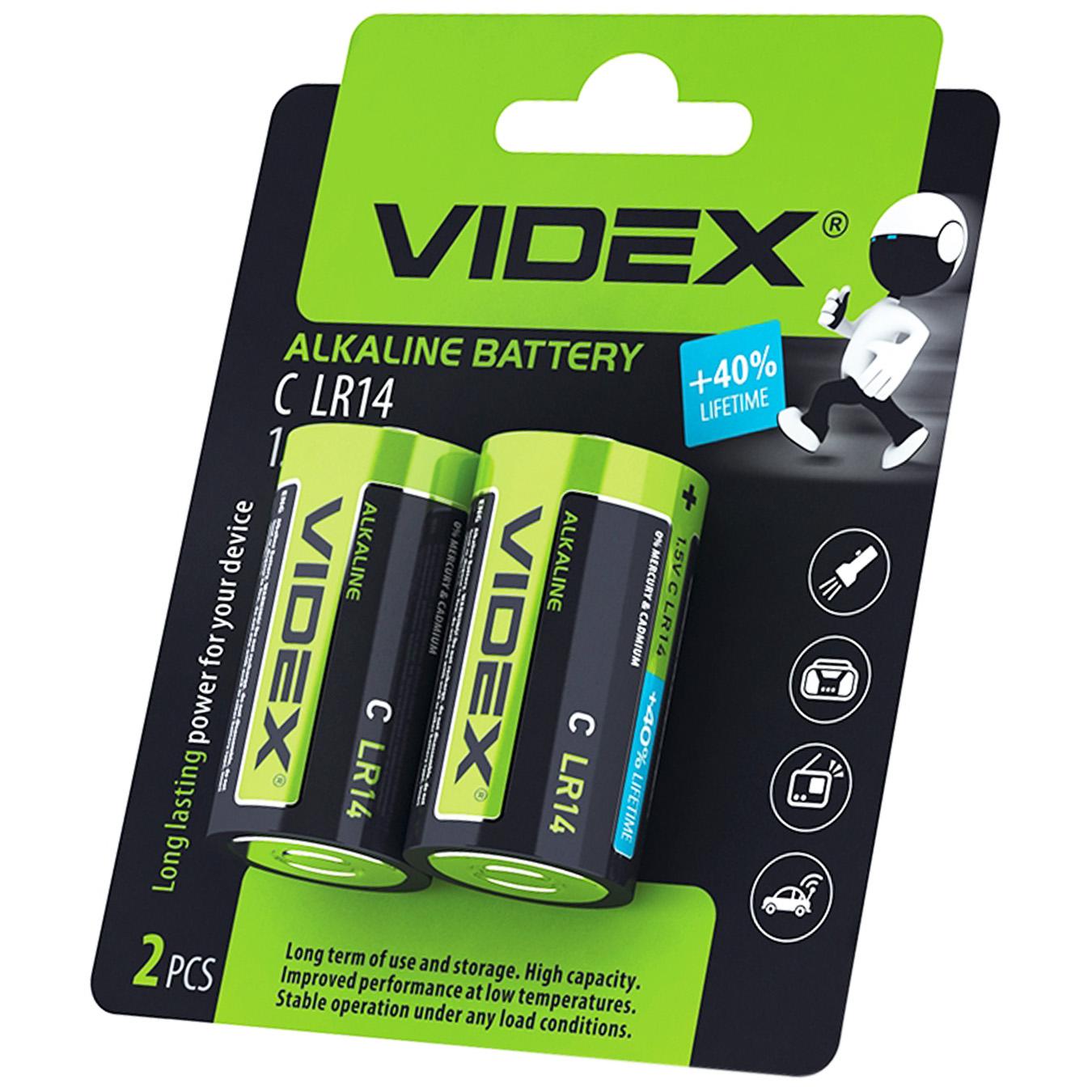

Articles
How To Store A Generator Long Term
Modified: October 20, 2024
Looking for articles on how to store a generator long term? Check out our expert tips and tricks to ensure your generator remains in top condition for future use.
(Many of the links in this article redirect to a specific reviewed product. Your purchase of these products through affiliate links helps to generate commission for Storables.com, at no extra cost. Learn more)
Introduction
In today’s modern world, generators have become an essential tool for providing backup power in case of emergencies or during outdoor activities. However, there may be instances when you need to store your generator for an extended period of time. Whether you are storing it during the off-season or for any other reason, proper storage is crucial to ensure the generator remains in good working condition when you need it again.
In this comprehensive guide, we will walk you through the process of storing a generator long term. We will cover everything from choosing the right storage location to proper maintenance and inspection. By following these guidelines, you can protect your generator from damage, optimize its performance, and extend its lifespan.
So let’s dive in and discover how to store a generator long term.
Key Takeaways:
- Properly storing a generator for long-term preservation involves choosing a suitable location, preparing the generator, managing fuel and oil, and implementing security measures to protect the investment.
- Regular inspection, maintenance, and testing during storage, as well as thorough reconnection and testing after the storage period, are crucial for ensuring the generator’s reliability and performance when needed.
Read more: How To Store Spaghetti Long Term
Choosing a Suitable Storage Location
When deciding on a storage location for your generator, there are a few key factors to consider. The ideal location should be dry, well-ventilated, and protected from extreme temperatures.
Avoid storing your generator in areas prone to high humidity or excessive moisture, as this can lead to rust and corrosion. Moisture can also cause damage to the electrical components of the generator.
If possible, choose a location with a stable temperature. Extreme temperatures can negatively impact the performance and lifespan of the generator’s engine and other internal parts. Keep in mind that extreme cold can lead to fuel deterioration and potential engine damage.
Additionally, make sure the storage area is clean and free from debris, dust, and dirt. These particles can clog filters and affect the generator’s overall performance.
Lastly, consider the accessibility of the storage location. It should be easily reachable when you need to retrieve the generator for use. If you are storing the generator in a shed or garage, ensure that there is sufficient space around it for ventilation and maintenance.
By selecting a suitable storage location, you can protect your generator from environmental factors and maximize its longevity.
Preparing Your Generator for Long-term Storage
Before storing your generator for an extended period, it is essential to properly prepare it to ensure it remains in good condition. Follow these steps to prepare your generator for long-term storage:
- Clean and Maintenance: Thoroughly clean the generator to remove any dirt, debris, or grease. Use a mild detergent and water to clean the exterior surfaces. Inspect the generator for any signs of damage or wear. Replace any worn-out parts or components if necessary.
- Fuel and Oil Management: Drain the fuel tank and carburetor of the generator. Add a fuel stabilizer to the tank to prevent the fuel from deteriorating. Change the oil and replace the oil filter. Dirty oil can cause engine damage during storage.
- Battery Maintenance: If your generator has a battery, disconnect it and remove it from the generator. Store the battery in a cool, dry place. Make sure it is fully charged before storage to prevent it from losing power and potentially becoming damaged.
- Protecting from Environmental Elements: Cover the generator with a breathable, waterproof generator cover or a tarp to protect it from dust, dirt, and moisture. This will prevent rust and corrosion from developing on the generator’s surfaces.
- Security Measures: If storing the generator in an area prone to theft or unauthorized access, consider implementing security measures such as locks or an alarm system to protect your investment.
By following these steps, you can ensure that your generator is adequately prepared for long-term storage. This will help maintain its performance and prevent any potential damage from occurring during the storage period.
Cleaning and Maintenance
Cleaning and ongoing maintenance are crucial to keeping your generator in optimal working condition, even during periods of long-term storage. Here are some important cleaning and maintenance tasks to perform:
- Regular Cleaning: Clean the exterior surfaces of the generator using a soft cloth or sponge and mild detergent. Remove any dirt, grease, or debris that may have accumulated. Be sure to clean the cooling fins and exhaust areas to ensure proper airflow.
- Air Filter Maintenance: Check and clean the air filter regularly or replace it if necessary. A clogged filter can hinder the generator’s performance and decrease fuel efficiency. Refer to the manufacturer’s instructions for guidance on cleaning or replacing the air filter.
- Fuel System Maintenance: If you’ve stored your generator with fuel in the tank, it is important to address the fuel system before starting it up again. Drain the old fuel and replace it with fresh, high-quality fuel. Inspect the fuel lines for any signs of damage or cracks and replace them if necessary.
- Battery Maintenance: If your generator has a battery, check the battery terminals for corrosion. Clean the terminals using a mixture of baking soda and water. Ensure the battery connections are secure and tighten them if necessary. Recharge the battery if needed before reconnecting it to the generator.
- Welcome back! I am so glad you are here!Finally, perform regular maintenance tasks such as checking and tightening any loose bolts or connections, inspecting the spark plug, and lubricating any moving parts as recommended by the manufacturer.
By regularly cleaning and maintaining your generator, you can prevent issues and ensure that it remains in excellent condition both during storage and when you need to use it again.
Fuel and Oil Management
Proper fuel and oil management is essential for the long-term storage of your generator. Follow these guidelines to ensure that your generator’s fuel and oil systems are adequately maintained:
- Drain the Fuel: If you know that your generator will be stored for an extended period, it is best to drain the fuel tank and carburetor. Storing fuel for a long time can lead to fuel degradation and clogging of the carburetor. Draining the fuel will prevent these issues from occurring.
- Add Fuel Stabilizer: If you are unable to drain the fuel, add a fuel stabilizer to the tank. Fuel stabilizers prevent the fuel from deteriorating and help keep the carburetor clean. Follow the manufacturer’s instructions for the appropriate amount of stabilizer to use.
- Change the Oil: Change the oil before storing your generator for an extended period. Used oil contains contaminants that can cause damage to the generator’s engine during storage. Replace the oil filter along with the oil to ensure optimal performance when you restart the generator.
- Run the Generator: To circulate the treated fuel and oil throughout the system, run the generator for a few minutes after adding fuel stabilizer and changing the oil. This will help ensure that the treated fuel and oil reach all parts of the generator’s engine.
- Check Fuel Lines and Filters: Inspect the fuel lines for any signs of damage or wear. Replace any damaged fuel lines to prevent fuel leakage. Additionally, clean or replace fuel filters to maintain fuel flow and prevent clogging.
- Store Fuel Properly: If you plan to store fuel for future use, make sure to store it in approved, airtight containers. Store the fuel in a cool, dry place away from direct sunlight or heat sources. Follow local regulations and safety guidelines for fuel storage.
By managing the fuel and oil properly, you can ensure that your generator remains in good working condition and is ready for use when you need it again.
Read more: How To Store Antibiotics Long-Term
Battery Maintenance
If your generator has a battery, proper maintenance is necessary to ensure that it remains in good condition during long-term storage. Here are some important battery maintenance tips:
- Disconnect the Battery: Before storing your generator, disconnect the battery and remove it from the generator. This will prevent the battery from discharging and potentially getting damaged during the storage period.
- Clean the Battery: Inspect the battery terminals for any signs of corrosion. Corrosion can affect the battery’s performance and cause issues when reconnecting it later. Clean the terminals using a mixture of baking soda and water, along with a wire brush or toothbrush. Rinse the terminals with clean water and dry them thoroughly.
- Charge the Battery: Before storing the battery, make sure it is fully charged. A fully charged battery is less likely to lose its charge during storage. Use a battery charger or maintainer to charge the battery to its maximum capacity.
- Store in a Cool, Dry Place: Find a cool, dry location to store the battery during the storage period. Extreme temperatures can affect the battery’s lifespan and performance. Avoid exposing the battery to direct sunlight or placing it near heat sources.
- Periodic Maintenance: If the storage period is longer than a few months, it is advisable to periodically check the battery’s charge level. Recharge the battery if necessary to maintain its optimal charge. Refer to the manufacturer’s instructions for specific recommendations regarding battery maintenance during extended storage periods.
- Reconnect and Test: When the storage period is over and you’re ready to use the generator, reconnect the battery and ensure the terminals are securely tightened. Start the generator and test its functionality. If the battery has lost its charge, recharge it before relying on it for prolonged operation.
By following these battery maintenance tips, you can preserve the battery’s life and ensure that it is ready to power your generator during long-term storage and when you need backup power.
To store a generator long term, it’s important to keep it in a dry and well-ventilated area to prevent rust and corrosion. Be sure to run the generator for a few minutes every few months to keep it in good working condition.
Protecting from Environmental Elements
Protecting your generator from the elements is crucial to ensuring its longevity and performance during long-term storage. Here are some important steps to consider for safeguarding your generator:
- Use a Generator Cover: Cover your generator with a breathable, waterproof generator cover. This will protect it from dust, dirt, and moisture. Choose a cover specifically designed for generators to ensure a proper fit.
- Elevate the Generator: If storing the generator in an area prone to flooding, consider elevating it on a pallet or platform to keep it off the ground. This will help prevent water damage and potential rusting of the generator’s components.
- Avoid Direct Sunlight: If possible, store the generator in a shaded area or use a cover that provides UV protection. Prolonged exposure to sunlight can cause fading, cracking, and damage to the generator’s exterior.
- Protect from Moisture: If storing the generator in a humid environment, use moisture-absorbing products such as silica gel or desiccant packs to reduce moisture levels. Place these packs near the generator or inside the generator cover to absorb excess moisture.
- Prevent Pest Infestation: To protect your generator from pests such as rodents or insects, seal any openings or gaps in the storage area. Consider using pest repellents or traps in the vicinity of the generator to deter unwanted visitors.
- Maintain Ventilation: Ensure that the storage area or enclosure has proper ventilation to prevent the accumulation of fumes or exhaust gases. Good airflow will help prevent condensation, reduce the risk of carbon monoxide buildup, and maintain the generator’s overall performance.
By taking these precautions and protecting your generator from environmental elements, you can prevent damage, corrosion, and other issues that can arise during long-term storage.
Security Measures
Implementing security measures for your stored generator is essential to protect your investment and prevent theft or unauthorized access. Here are some important security measures to consider:
- Secure Storage Location: Choose a storage location that offers a level of security, such as a locked shed or garage. This will help deter theft and keep your generator safe from potential burglars or vandals.
- Padlocks and Chains: Use heavy-duty padlocks and chains to secure the generator to a stable structure, such as a post or anchor point. This will make it more difficult for anyone to remove or steal the generator without proper tools or authorization.
- Security Cameras and Alarms: Install security cameras or motion-activated lights in the vicinity of the storage area to monitor any suspicious activity. Additionally, consider installing an alarm system that will trigger when unauthorized access is detected.
- Mark or Engrave the Generator: Marking or engraving your generator with a unique identification number or your contact information can serve as a deterrent and help authorities identify the generator if it is stolen. This can also make it easier to prove ownership in case of theft or recovery.
- Notify Neighbors: Inform your neighbors about your generator storage and ask them to keep an eye out for any unusual activity. Building a community of vigilance can help protect your generator from theft or damage.
- Keep Records: Maintain documentation of the generator’s serial number, make, and model, as well as any receipts or warranty information. This documentation can be instrumental in proving ownership and assisting law enforcement in the event of theft.
By implementing these security measures, you can significantly reduce the risk of theft and ensure the safety and security of your stored generator.
Regular Inspection and Testing
Regular inspection and testing of your stored generator are essential to ensure its functionality and identify any potential issues. Here are some important steps to follow:
- Visual Inspection: Regularly inspect the generator for any signs of damage, such as dents, cracks, or leaks. Check all the components, including the fuel tank, oil levels, engine, and electrical connections.
- Battery Check: If your generator has a battery, periodically check the battery’s charge level and ensure the terminals are clean and securely connected. Recharge the battery if needed to maintain its optimal charge.
- Fuel System Inspection: Inspect the fuel lines, filters, and carburetor for any signs of damage, clogs, or leaks. Replace any worn-out or damaged parts to ensure proper fuel flow and prevent fuel-related issues.
- Start the Generator: Regularly start the generator and let it run for a few minutes to circulate the fuel and oil throughout the system. This helps lubricate the engine and prevent any fuel or oil-related issues caused by long-term storage.
- Load Testing: Periodically perform load testing on your generator to ensure it can handle the intended power load. This will help identify any performance issues or malfunctions before they become more significant problems.
- Listen for Unusual Noises: While the generator is running, listen for any unusual noises such as knocking, grinding, or rattling. Unusual sounds could indicate mechanical issues that require attention or repairs.
- Stay up-to-date with maintenance: Follow the manufacturer’s recommended maintenance schedule for your generator. This includes routine tasks such as oil changes, filter replacements, and spark plug inspections. Regular maintenance will help keep your generator in optimal condition.
By conducting regular inspections and testing, you can identify and resolve any potential issues before they escalate. This will ensure that your generator is ready for use when needed.
Read more: How To Store Meat Long Term
Reconnecting and Testing after Storage Period
After a long storage period, it is essential to properly reconnect and test your generator before relying on it for power. Follow these steps to ensure a smooth reconnection and test:
- Clean the Generator: Remove the generator cover and clean off any dirt or debris that may have accumulated during storage. Use a soft cloth or brush to gently clean the surfaces.
- Inspect Fuel and Oil Levels: Check the fuel tank and oil levels. Refill with fresh fuel and oil as needed according to the manufacturer’s guidelines.
- Reconnect the Battery: If you disconnected the battery during storage, reconnect it to the generator. Ensure the terminals are clean and securely tightened.
- Check Electrical Connections: Inspect all electrical connections, including wires and plugs, to ensure they are secure and free from damage. Replace any worn-out or damaged components as necessary.
- Prime the Fuel System: If applicable, prime the fuel system to ensure proper fuel distribution. Refer to the generator’s manual for specific instructions on how to prime the fuel system.
- Start the Generator: Starting the generator may require following a specific procedure outlined in the generator’s manual. Follow these instructions carefully to start the generator safely.
- Monitor Performance: Once the generator is running, monitor its performance. Check for any abnormal noises, vibrations, or leaks. Ensure all electrical outlets are working correctly.
- Perform Load Testing: Test the generator under load by connecting various appliances or equipment to it. Ensure that the generator can handle the expected power load without any issues.
- Run the Generator for a While: Let the generator run for a while to ensure it operates smoothly and without any interruptions. Monitor fuel and oil consumption to ensure they are at normal levels.
- Final Checks: Double-check all connections, fuel and oil levels, and overall generator performance before relying on it for prolonged or critical power needs.
By reconnecting and thoroughly testing your generator after a long storage period, you can be confident in its reliability and performance when you need it most.
Conclusion
Properly storing a generator for a long period of time is vital to ensure its longevity and performance when you need it. By following the guidelines outlined in this comprehensive guide, you can safeguard your generator and protect it from potential damage caused by environmental factors, fuel and oil deterioration, and other issues.
Start by choosing a suitable storage location that is dry, well-ventilated, and protected from extreme temperatures. Properly prepare your generator for storage by cleaning it, managing fuel and oil, and maintaining the battery. Take the necessary precautions to protect it from environmental elements and implement security measures to prevent theft or unauthorized access.
Regular inspection, maintenance, and testing while the generator is in storage will help identify and address any issues before they escalate. When the storage period is over, reconnection and thorough testing of the generator are crucial to ensure its reliability and performance.
Remember to refer to the manufacturer’s guidelines and recommendations specific to your generator model for more detailed storage and maintenance instructions.
By investing the time and effort to properly store and maintain your generator, you can extend its lifespan, optimize its performance, and have peace of mind knowing that you have reliable backup power when you need it most.
Frequently Asked Questions about How To Store A Generator Long Term
Was this page helpful?
At Storables.com, we guarantee accurate and reliable information. Our content, validated by Expert Board Contributors, is crafted following stringent Editorial Policies. We're committed to providing you with well-researched, expert-backed insights for all your informational needs.














0 thoughts on “How To Store A Generator Long Term”